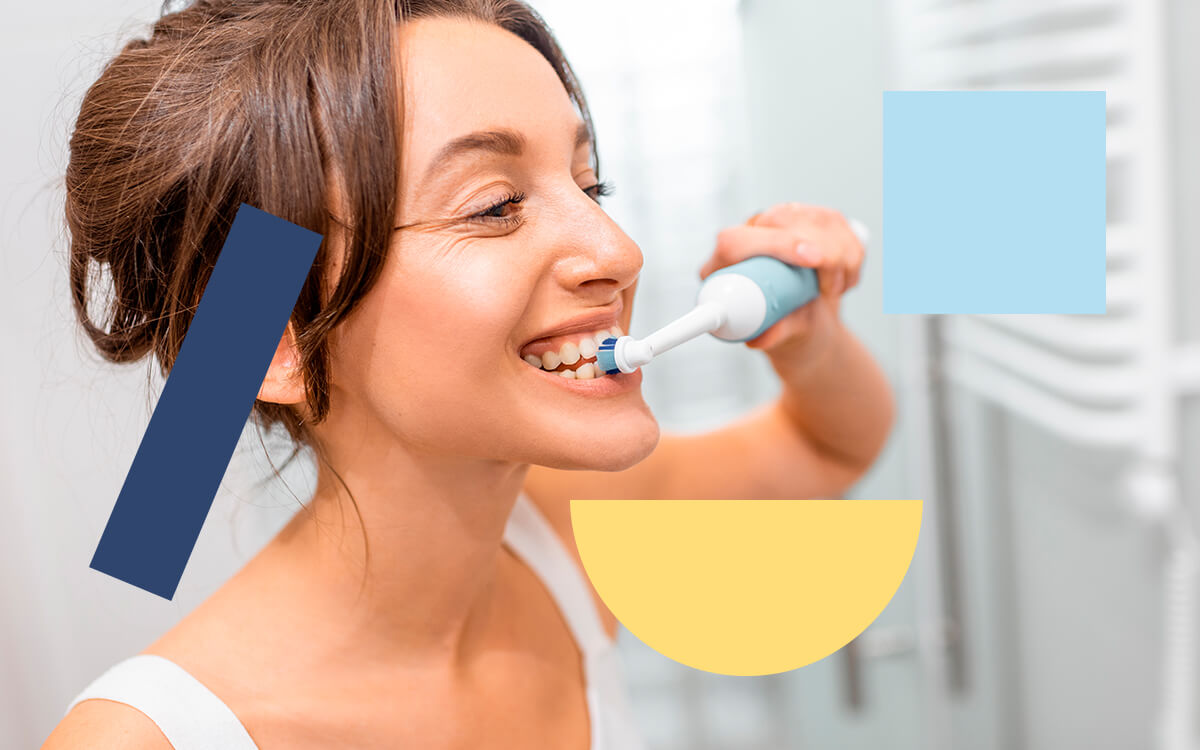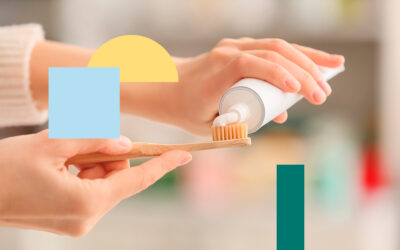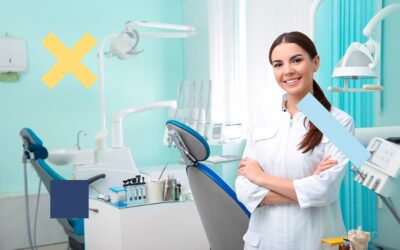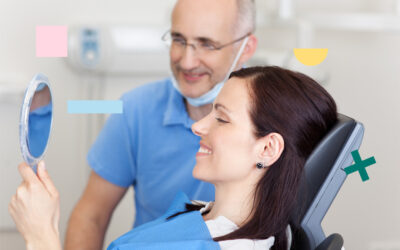The use of oral antiseptics helps patients who come to the dental clinic to maintain good oral hygiene and prevent oral diseases. These antiseptics are found in different products such as mouthwashes, toothpastes and dental gels that routinely contain antimicrobial agents that help reduce the microbial load in the mouth.
It is the responsibility of the professional in the dental clinic to guide the patient towards the selection of the product that offers the most benefits, depending on the patient's state of health and the pharmacist's responsibility to know the different alternatives available to him/her, in order to be able to guide the client who needs it in his/her pharmacy.
Nowadays, there is a wide range of oral health products on offer, which is why it is important to know certain key aspects that will make our selection easier.
- 1 What are oral antiseptics and how do they act on the microorganisms that cause oral diseases?
- 2 What are the main types of oral antiseptics?
- 3 What are the advantages and disadvantages of each oral antiseptic?
- 4 How to choose the most suitable oral antiseptic?
- 5 Discover our products for professionals
What are oral antiseptics and how do they act on the microorganisms that cause oral diseases?
We are talking about chemical products used to prevent and control the proliferation of microorganisms in the oral cavity thanks to the presence of active compounds that inhibit the growth of bacteria, viruses and fungi.
Oral antiseptics are very useful in preventing infections and promoting proper healing of tissues after dental procedures such as tooth extractions or periodontal surgeries. They also help to reduce and prevent the accumulation of dental biofilm, gum inflammation or gingivitis, caries, among other diseases.
What are the main types of oral antiseptics?
Among the oral antiseptics most commonly used by professionals in the sector are chlorhexidine, which stands out for its bactericidal and bacteriostatic properties that allow it to eliminate bacteria and at the same time inhibit their growth, and cetylpyridinium chloride, which has antiplaque and antimicrobial properties.
Other common antiseptic agents include: triclosan with antibacterial and antifungal properties; phenols for their action against a wide variety of microorganisms, including bacteria and fungi; seawater due to its natural antiseptic and anti-inflammatory properties in addition to the minerals and trace elements that form it; hydrogen peroxide, better known as hydrogen peroxide, with antimicrobial properties; and some essential oils such as peppermint oil, tea tree oil and clove oil for their antimicrobial properties.
What are the advantages and disadvantages of each oral antiseptic?
The properties of each oral antiseptic define its efficacy in combating certain oral microorganisms, although they may also cause adverse effects or may not be compatible with other products, such as drugs.
- Chlorhexidine is effective in the reduction of dental biofilm and the prevention of periodontal and peri-implant diseases and complications after oral surgery. It is recommended that it be used for a certain period of time that will vary depending on the concentration of this antiseptic, since in the long term it could produce taste alterations and dental colorations.
- Cetylpyridinium chloride is also used for dental biofilm control and prevention of periodontal diseases. Its microbial spectrum of action is lower than that of chlorhexidine, but it can be used for prolonged periods of time, making it an ideal alternative for daily oral hygiene.
- Triclosan helps in inhibiting the growth of oral bacteria, although there are doubts about its possible contribution to antibiotic resistance. In some countries its use in oral products has been restricted.
- Phenols are effective against various microorganisms, including bacteria and fungi, but their use in everyday products has also been limited due to their unpleasant taste and possible toxicity if ingested in large quantities.
- Hydrogen peroxide can help reduce the bacterial load in the oral cavity, however, prolonged use can cause irritation of oral tissues and tooth discoloration.
- Essential oils help provide fresh breath, although their effectiveness may vary. They must be properly diluted to avoid irritation and some people may have allergies.
We must keep in mind that the proper use of any oral antiseptic must follow both the manufacturer's instructions and the recommendations of a health professional.
How to choose the most suitable oral antiseptic?
The choice of one oral antiseptic or another will depend on each patient's specific situation and individual preferences.
In cases of gingivitis and depending on its severity, we may recommend mouthwashes with chlorhexidine or cetylpyridinium chloride that help reduce dental biofilm and control gingival inflammation. Chlorhexidine has also been shown in multiple studies to be effective in reducing bacterial load and inflammation associated with periodontitis, periodontal surgery or dental implant placement.
In the case of orthodontic treatments or as an antiseptic for prevention and daily protection, the most suitable for its properties is cetylpyridinium chloride, with proven efficacy in the prevention of gingivitis and caries, diseases commonly related to orthodontic patients.
For the relief of canker sores, soothing and mild antiseptic ingredients such as aloe vera or hyaluronic acid are recommended to help increase the speed of recovery.
How should the oral antiseptic be used?
The correct use of oral antiseptic guarantees its efficacy and minimizes possible adverse effects, so dentists, dental hygienists and pharmacists play a fundamental role in patient education and in the selection of the most recommended product according to the individual needs of each person.
Generally, it is recommended to use a dose sufficient to cover the entire oral cavity, between 10-15 ml in the case of rinses and 2/3 of a toothbrush head in the case of oral pastes and gels. Exclusive products for the needs of oral health professionals.
Discover our products for professionals

The frequency of use varies depending on the antiseptic, the recommended presentation and the patient's lifestyle, usually two or three times a day.
When should the use of oral antiseptic be avoided?
Oral antiseptics may not always be appropriate, such as in patients with allergies to one or more components of the product, so it is important to obtain this information from the patient's medical history or to ask for it in the case of a pharmacy recommendation.
Another situation in which we should take precautions would be during pregnancy as some ingredients may have a potential risk to the developing fetus. Similarly, care should be taken during breastfeeding as some components may be absorbed and pass into breast milk. If in doubt, we recommend visiting e-lactancia: ¿Es compatible con la lactancia? a reliable source of information on the subject.
Finally, children under 6 years of age can use antiseptics such as chlorhexidine or CPC whenever the situation warrants it, such as in case of illness and/or oral trauma.
How should oral antiseptic be combined with toothbrushing and the use of dental floss or interdental brushes?
Tooth brushing should be the basis of good oral hygiene so we should instruct our patients to brush properly at least twice a day, for at least two minutes each session with gentle, circular movements that cover all surfaces of the teeth, including the chewing surfaces.
To contribute to the effectiveness of this brushing, it is recommended to use toothpastes with the appropriate active ingredients according to your individual situation, among which are the antiseptics already mentioned and others of great importance such as fluoride, effective in the prevention of dental caries.
After brushing, it is advisable to use mouthwashes following the product's instructions in terms of quantity and duration. In this way, we ensure that the active ingredient reaches all areas of the mouth, including interdental spaces and tongue.
It is important to perform each of these steps regularly and properly to maintain good oral hygiene.




 What to consider when choosing the best electric toothbrush?
What to consider when choosing the best electric toothbrush? How to relieve pain with newly placed braces?
How to relieve pain with newly placed braces? How to keep your breath fresh?
How to keep your breath fresh?


